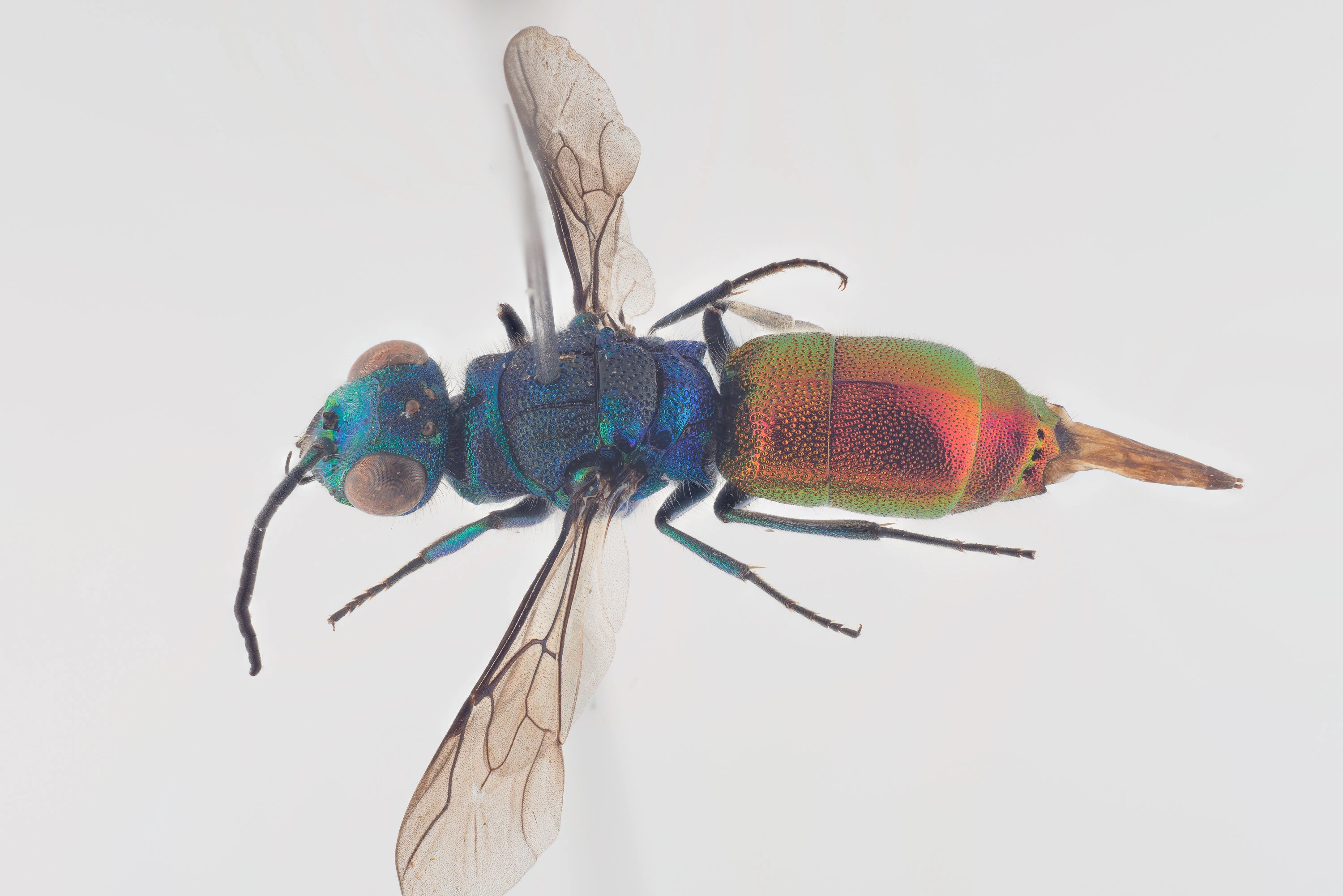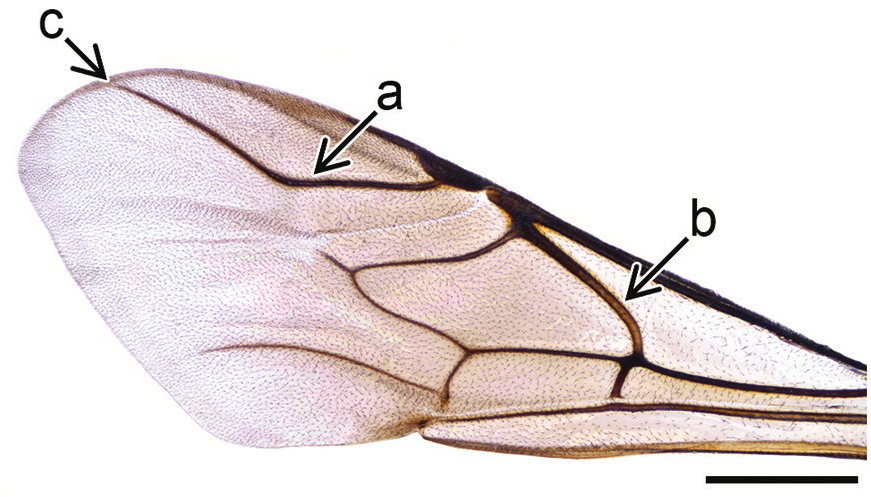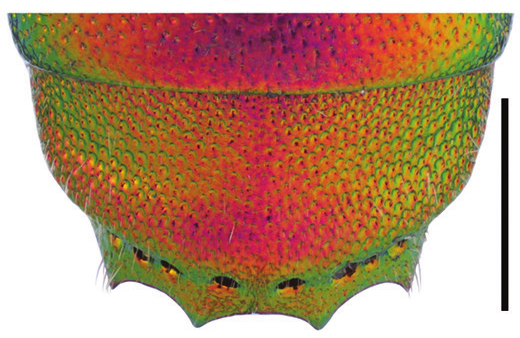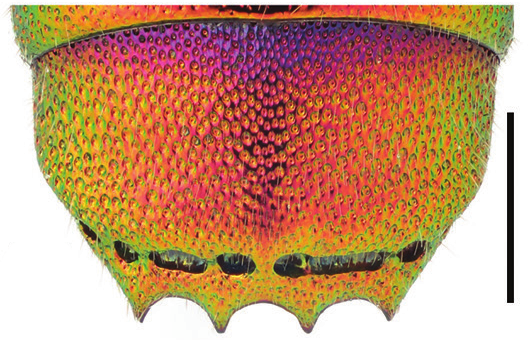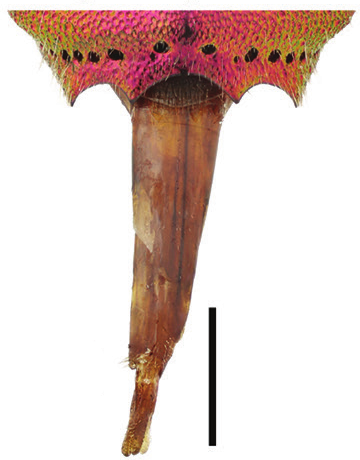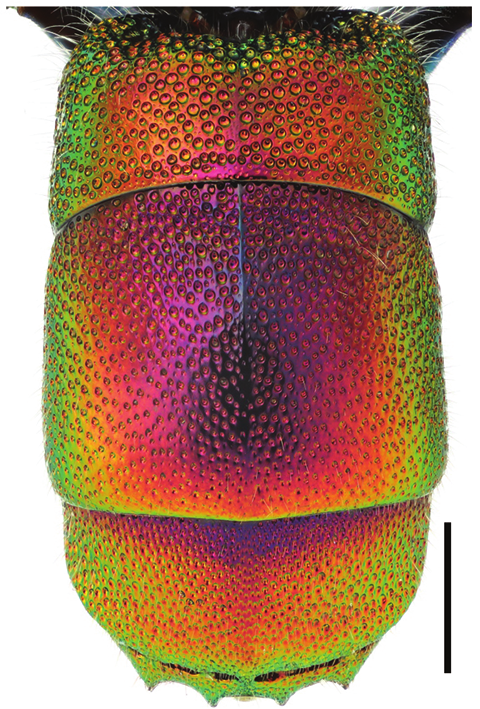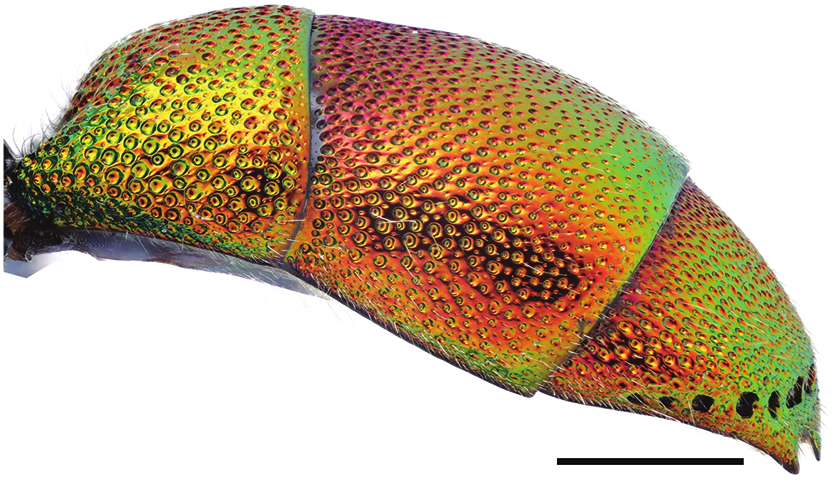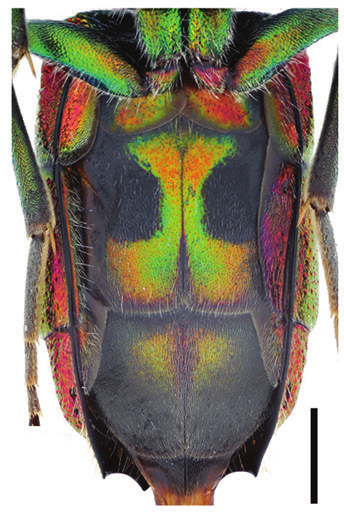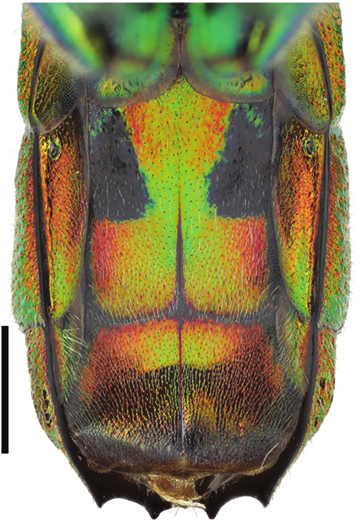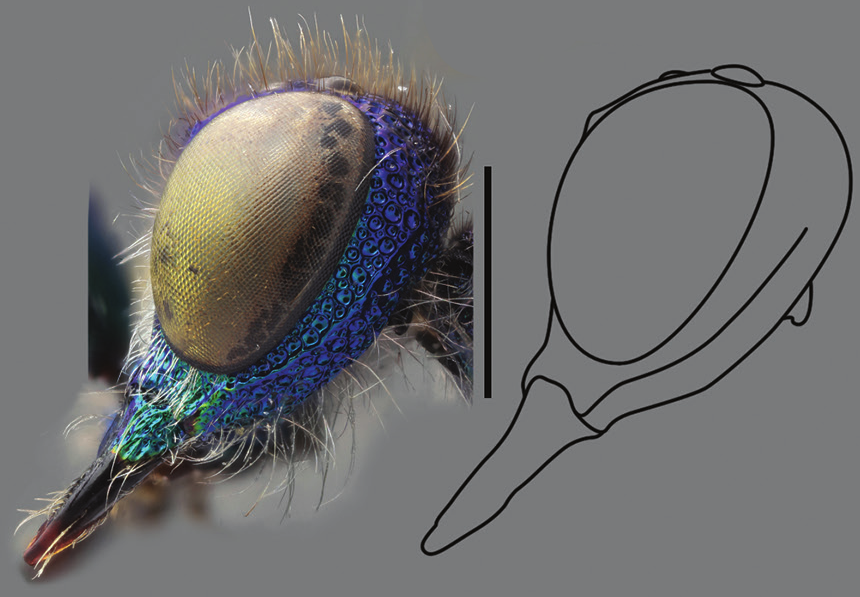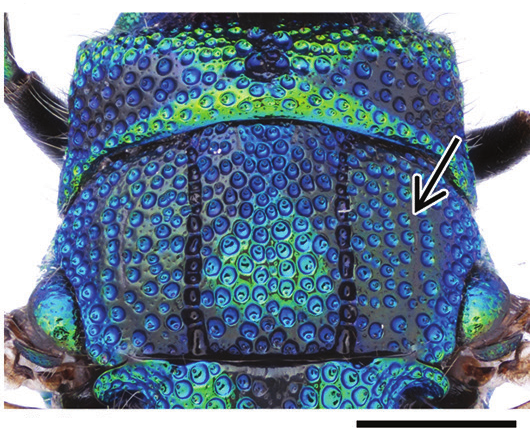Chrysis impressa
This is one of the most common species of the Chrysis ignita-group. The hosts are Eumeninae of the species Ancistrocerus parietinus and A. quadratus. The species is very difficult to separate from closely related species. Guidelines for identification include that the puncture of T2 is gradually finer towards the hind margin, and T3 of the female is typically sadle-shaped.
- Innhold
- Diagnosis
- Distribution
- Biology
Diagnosis
Figure 10
Forewing: Chrysis impressa, a and c radial sector vein, b medial vein.
Figure 84
T3, dorsal view: C. impressa ♀. Scale 1 mm.
Figure 85
T3, dorsal view: C. impressa ♂. Scale 1 mm.
Figure 92
Ovipositor, dorsal view: C. impressa ♀. Scale 1 mm.
Figure 107
Metasoma, dorsal view: C. impressa ♂. Scale 1 mm.
Figure 108
Metasoma, lateral view: C. impressa ♂. Scale 1 mm.
Figure 116
Metasoma, ventral view: C. impressa ♀. Scale 1 mm.
Figure 132
Metasoma, ventral view: C. impressa ♂. Scale 1 mm.
Figure 149
Head, lateral view: C. impressa ♂. Scale 1 mm.
Figure 164
Pronotum and mesoscutum, dorsal view (arrow indicating lateral field of mesoscutum): C. impressa ♀. Scale 1 mm.
Figure 168
Mesotibia (arrow indicating spurs): C. impressa ♀. Scale 1 mm.
Figure 170
Hindleg (arrow indicating second tarsomere): C. impressa ♀. Scale 1 mm.
Figure 177
Antenna (arrow indicating F1 or F1 and F2): C. impressa ♂. Scale 1 mm.
Length 6–11 mm.
The species is easily confused with other similarly coloured species of the C. ignita group and a combination of different diagnostic characters should be used in species determination. The head and the mesosoma are dorsally dark blue or black, and in the female the pronotum, mesopleuron and mesoscutellum have extensive golden green reflections (Fig. 164). The mesoscutum of the female is characteristically black, dark grey or olive coloured with contrastingly green or blue punctures (similar to C. longula) (Fig. 164). The mesoscutum of the male is often entirely dark blue or blue-violet. The tergites are golden red and relatively finely punctured (Figs 107, 108). The sternites are at least partially red-golden (Figs 116, 132) and the black spots of S2 are usually roundish in the female (Figs 116). The setae on the dorsal surface of the head are brownish in both sexes (Fig. 149). The mandible is relatively thick (medial width about half or nearly half of basal width) and basally with only slightly concave margins (Figs 141, 149). F1 is long and narrow, about 1.4 times as long as F2 in the female and at least 1.2 times as long as F2 in the male (Fig. 177).
Distribution
Denmark, Estonia, Finland, Latvia, Lithuania, Norway, Sweden. Very common.
West Palearctic: from western Europe to central Asia (Linsenmaier 1997).
Be aware that the records present in the GBIF map may be misleading for some countries due to unrevised data sets or missing information.
GBIF Taxon: Chrysis impressa Schenck, 1856Biology
Habitat: forest margins, clearings and gardens with sun-exposed dead wood. Adults are mainly observed flying and running on walls of wooden buildings (e.g. log barns), dead tree trunks (e.g. Betula, Populus), poles and log piles.
Flight period: early June to late August.
Host: Mainly Ancistrocerus claripennis Thomson and A. parietinus (Linnaeus) (Pärn et al. 2014, Martynova and Fateryga 2015, our own obs.), but probably also A. trifasciatus (Müller) (Vespidae) (Morgan 1984, Pärn et al. 2014, our own obs.).
